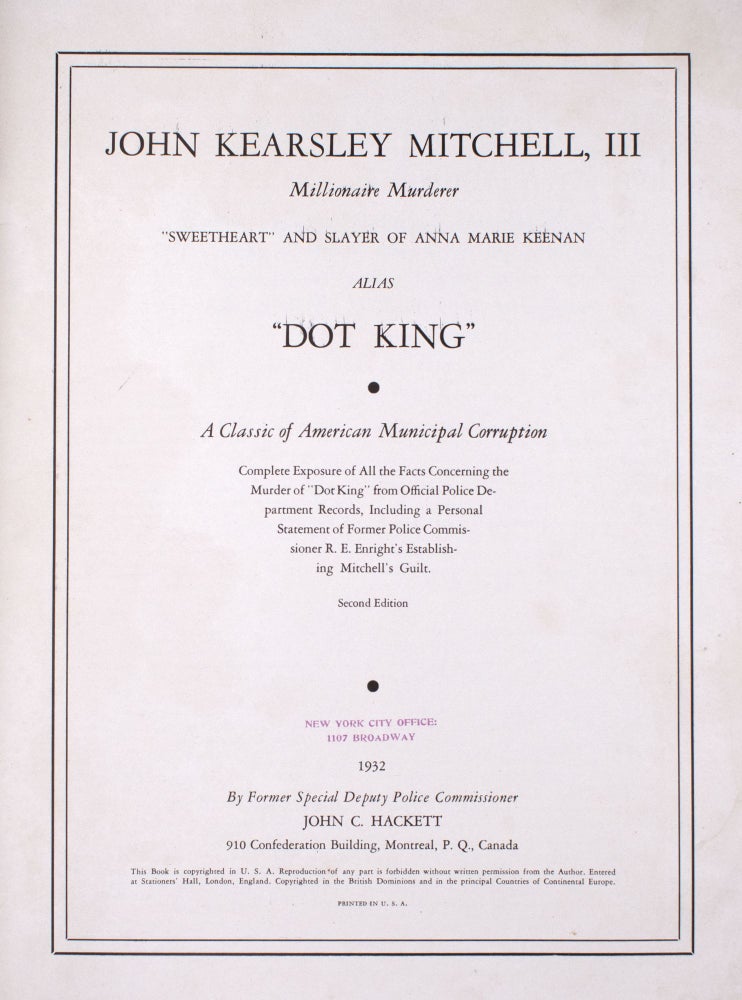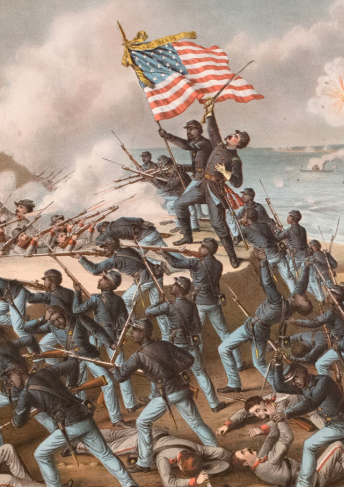Who killed the Broadway Butterfly?
John Kearsley Mitchell, III. Millionaire Muderer- The Tragedy of the Big Rubber Man and the Little Laundress-Cabaret Girl.
Montreal, P.Q., Canada: J.C. Hackett, 1932.
Price: $500.00
About the item
Second edition. 80 pp. with photographs throughout. 4to. Who killed the Broadway Butterfly? Staple-bound illustrated wrappers, light soiling and water spotting on cover, some small tears near staples along the spine. Center pages 39-42 are laid in where the staple has separated. Some wear and creasing at lower corner, else a very good copy of a scarce publication.
Item #346372
In 1922 John Kearsley Mitchell, III, a millionaire and the president of the Philadelphia Rubber Works who was married to the daughter of Edward T. Stotesbury (a Philadelphia partner of J .P. Morgan) met Dorothy "Dot" King, a 28-year-old Jazz Age flapper, a known party girl with a career as an artist’s model and actress. Born into a poor Irish family in Harlem as Anna Marie Keenan, she changed her name to "Dot" King and quickly became well known as "Broadway's Butterfly" among the rich and elite at parties. This was how she came to know the millionaire son-in-law J. Kearsley Mitchell, the man Dot dubbed her "sugar daddy" (one of the earliest examples of the term's use). King also had a relationship with well-to-do Puerto Rican steel magnate named Albert Guimares, a jealous lover that left her with bruises and black eyes on a few occasions. But it was Mitchell who set Dot King up in an aprtment on the fourth floor of 144 West 57th Street in New York City where he showered her with jewels, furs, and other clothes, and although they were never seen together in public, he was a frequent visitor to the apartment.
On March 15th, 1923 a maid discovered King's unconcious body and a bottle of chloroform was found in the bed. The room was in disarray, as though someone were searching for something Thousands of dollars in jewelry was missing from her apartment giving speculation that she was the victim of a burglary. Upon the death being made public, Mitchell turned himself into police to provide an alibi and no one was ever charged for the murder. Several films have adapted the narrative, notably The Naked City in 1948.
This publication is a thoroughly and obsessive, detailed call for accountability that illustrates the ways in which John Kearsley Mitchell, III was able to avoid consequences. A letter from writer Theodore Dreiser was included to reiterate Hackett's positions and likely to sell books. Aside from being the most complete document relating to an infamous criminal case, this is a fine example of a spiralling conspiracy theorist dedicated to the pursuit of justice, only in this instance he may be right.





